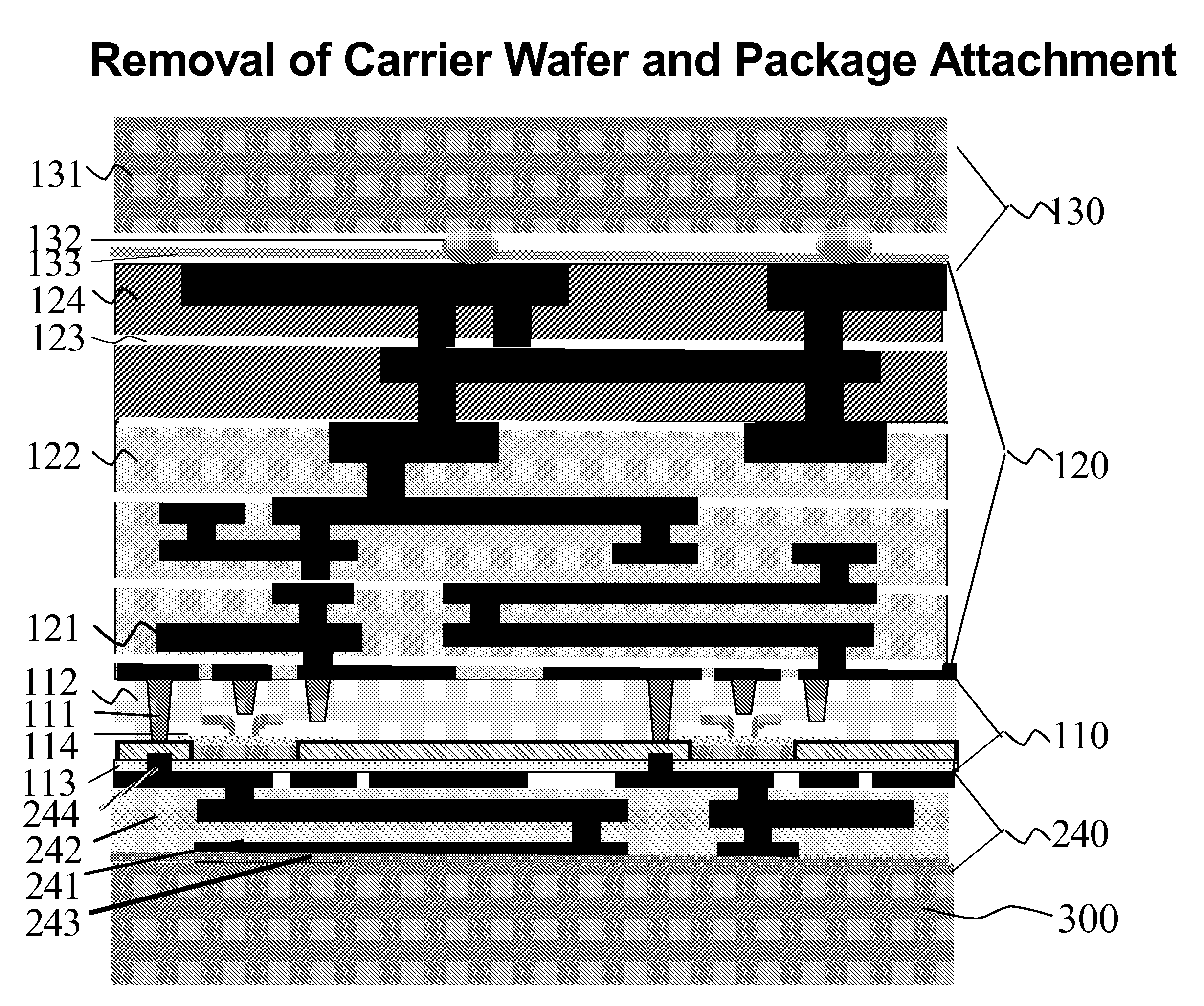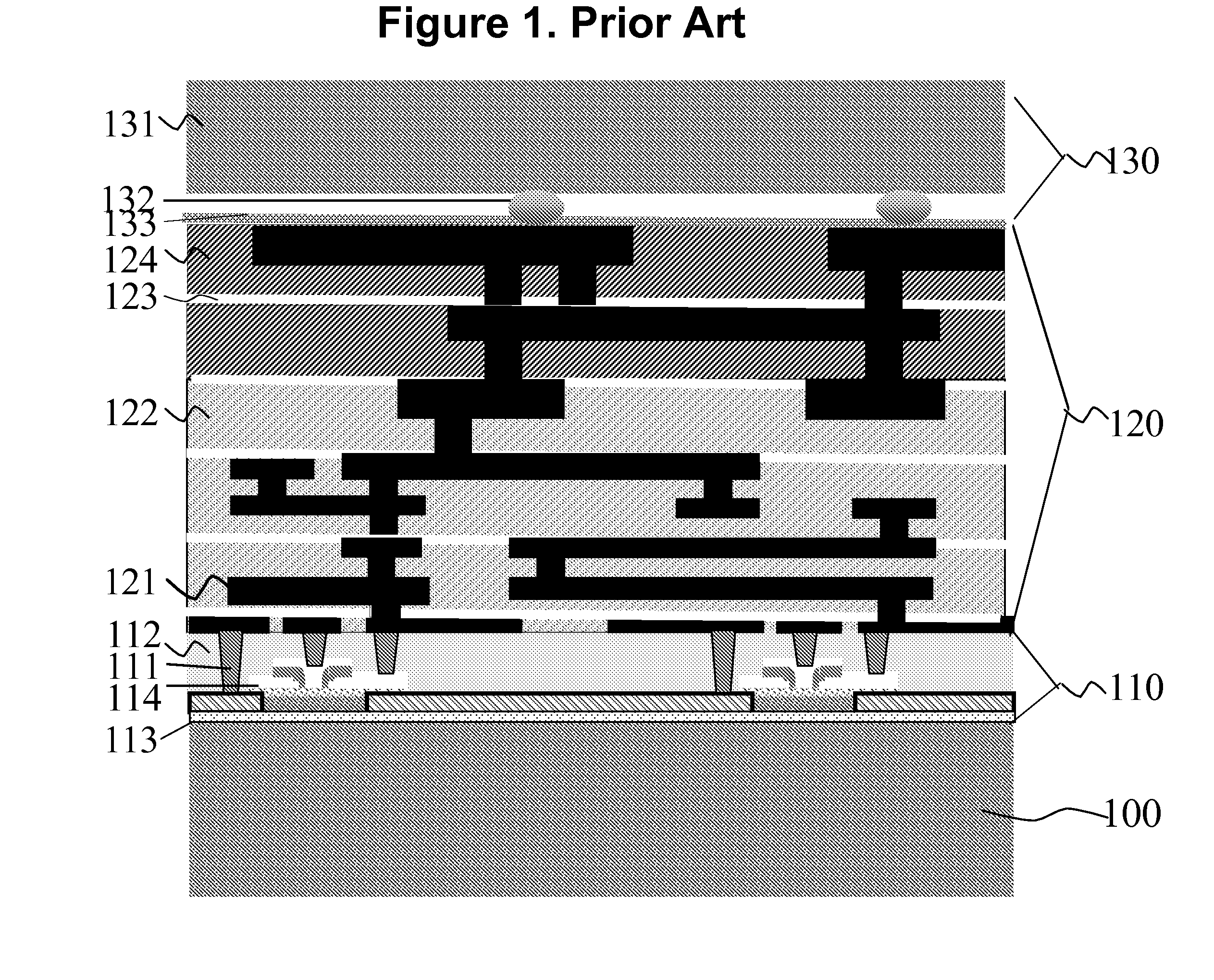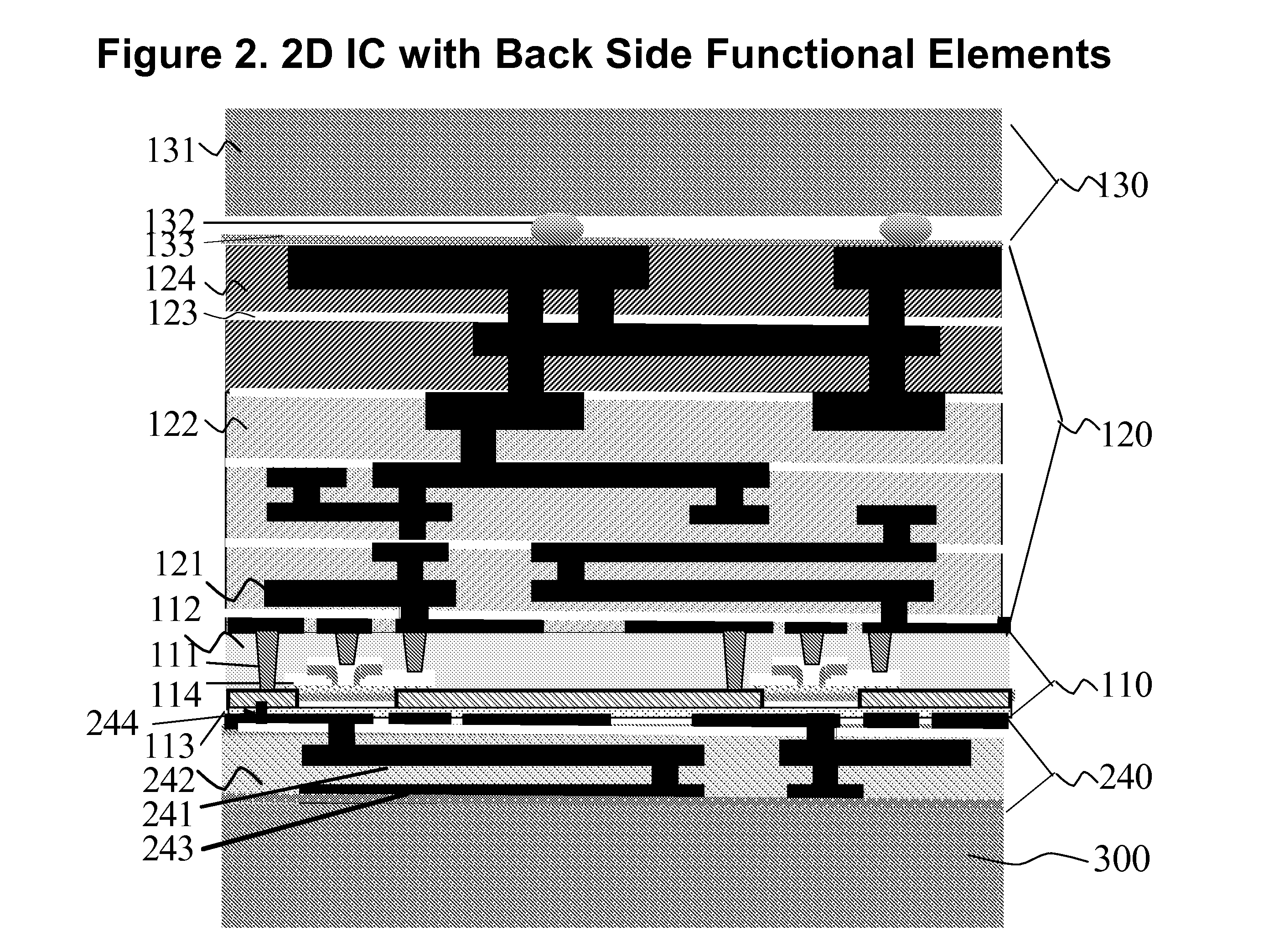Layer Transfer Process and Functionally Enhanced Integrated Circuits Products Thereby
a layer transfer and integrated circuit technology, applied in the field of three-dimensional integration of circuit components, can solve the problems of high cost, time-consuming, and difficult changes in architecture, and achieve the effects of low cost of ownership, enhanced functionality, and wide applicability
- Summary
- Abstract
- Description
- Claims
- Application Information
AI Technical Summary
Benefits of technology
Problems solved by technology
Method used
Image
Examples
Embodiment Construction
[0026]The present invention is based on the creation of enhanced 2D CMOS IC structure with functional elements on both sides BEOL IC solution enables improved performance of this novel structure, adds functionality and simplifies processing issues related to multilevel builds by utilizing layer transfer and sequential layer wise build approaches as and where appropriate.
[0027]In the first embodiment of the present invention, a CMOS technology structure (see FIG. 1) with its problems related to the via blockage, multi-layer wiring, etc., is transformed into an enhanced planar IC CMOS structure based on creation of a wiring scheme that is disposed on both sides of the device layer (see FIG. 2). This is distinct from the structure illustrated in FIG. 1 which can be described as follows: In FIG. 1 the FEOL structure [110] is fabricated on the substrate [100] and interconnected on the top using BEOL levels [120]. FEOL structure [110] would include the various transistors and the associat...
PUM
 Login to View More
Login to View More Abstract
Description
Claims
Application Information
 Login to View More
Login to View More - R&D
- Intellectual Property
- Life Sciences
- Materials
- Tech Scout
- Unparalleled Data Quality
- Higher Quality Content
- 60% Fewer Hallucinations
Browse by: Latest US Patents, China's latest patents, Technical Efficacy Thesaurus, Application Domain, Technology Topic, Popular Technical Reports.
© 2025 PatSnap. All rights reserved.Legal|Privacy policy|Modern Slavery Act Transparency Statement|Sitemap|About US| Contact US: help@patsnap.com



